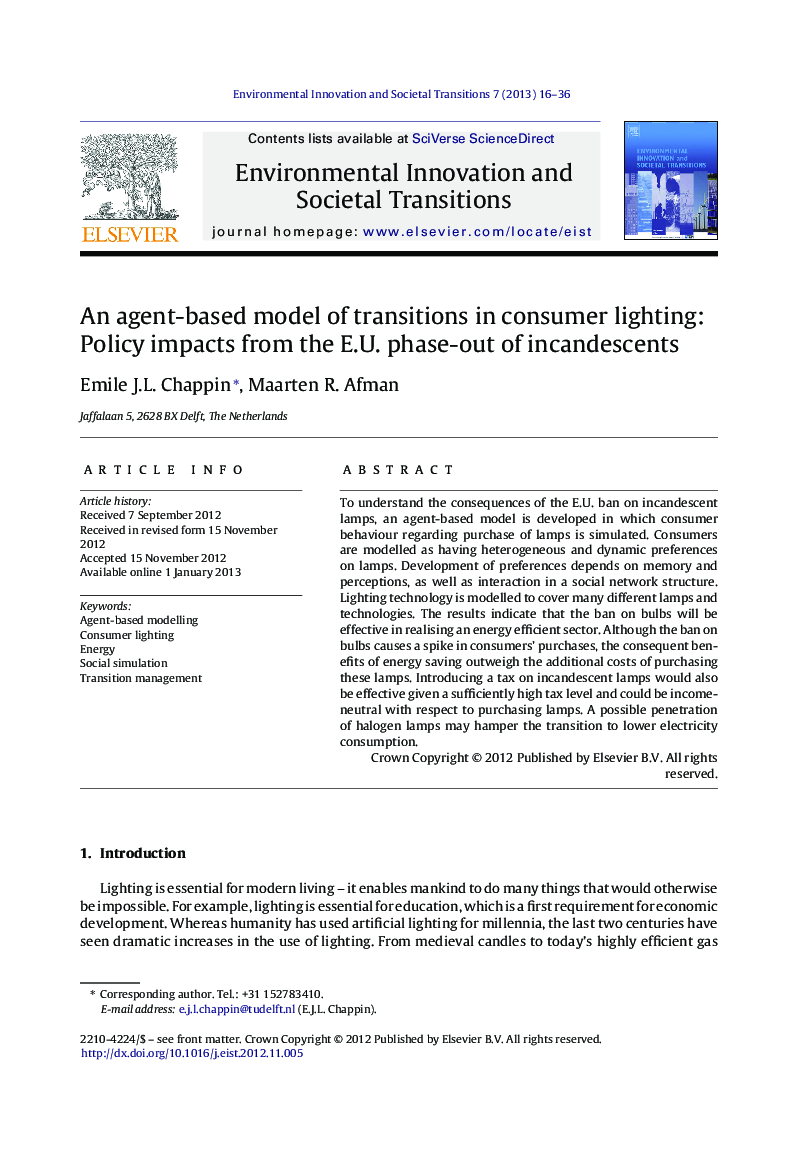| Article ID | Journal | Published Year | Pages | File Type |
|---|---|---|---|---|
| 108273 | Environmental Innovation and Societal Transitions | 2013 | 21 Pages |
To understand the consequences of the E.U. ban on incandescent lamps, an agent-based model is developed in which consumer behaviour regarding purchase of lamps is simulated. Consumers are modelled as having heterogeneous and dynamic preferences on lamps. Development of preferences depends on memory and perceptions, as well as interaction in a social network structure. Lighting technology is modelled to cover many different lamps and technologies. The results indicate that the ban on bulbs will be effective in realising an energy efficient sector. Although the ban on bulbs causes a spike in consumers’ purchases, the consequent benefits of energy saving outweigh the additional costs of purchasing these lamps. Introducing a tax on incandescent lamps would also be effective given a sufficiently high tax level and could be income-neutral with respect to purchasing lamps. A possible penetration of halogen lamps may hamper the transition to lower electricity consumption.
► An agent-based model is developed in which consumers are simulated. ► Consumers purchase lights based on preferences and opinions. ► Transition policy for low-electricity lighting can be evaluated. ► The ban on bulbs will be effective in realising an energy efficient sector. ► A tax on incandescent lamps would also be effective.
